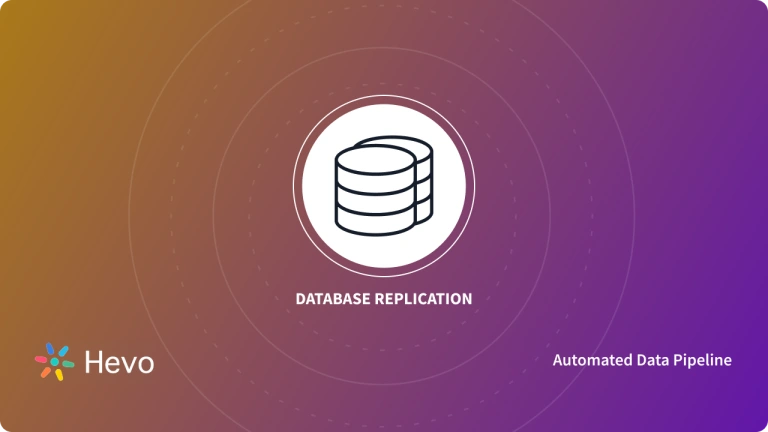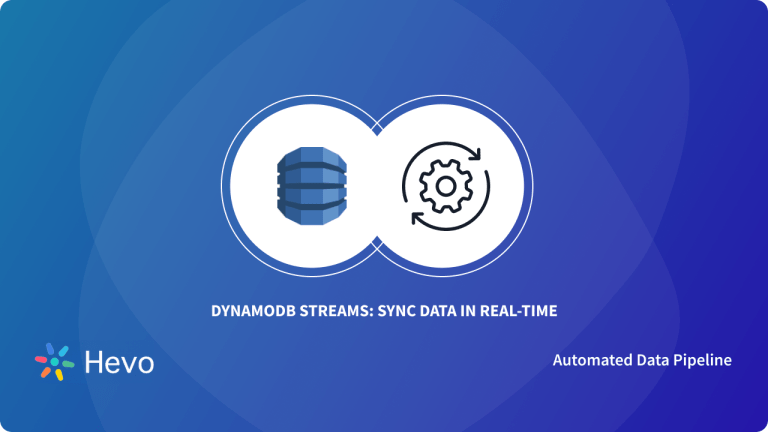Cloud Computing is no longer seen as an industry buzzword but as a critical next step for companies and organizations that seek to modernize their IT infrastructure. It is the solution for many startups that want a way to abstract away the complexities of large infrastructure while taking advantage of the scalability that cloud provides. The database powering the application needs to distribute data such that requests are served by databases in locations close to users, and one way of handling a distributed database is by performing Multi-Master Replication.
The present article aims at providing a step-by-step guide to help you set up DynamoDB Replication and help you replicate your DynamoDB data with ease. A complete walkthrough of the content will help you develop the skill to set up DynamoDB Replication to power distributed application architectures.
Table of Contents
Introduction to DynamoDB
DynamoDB is a fully managed NoSQL database service provided by AWS designed for fast and flexible performance. It offers seamless scalability and low latency and supports key-value and document data structures. With its automatic scaling and built-in security, DynamoDB is perfect for applications requiring high availability and performance without the need for complex database management.
Use Cases:
- Real-time Applications: Ideal for gaming leaderboards, messaging apps, and real-time bidding.
- E-commerce Platforms: Manages high-traffic shopping carts and product catalogs.
- IoT Data Management: Stores and processes large streams of IoT sensor data.
- Mobile Backend: Handles user profiles, sessions, and events for mobile applications.
- Content Management: Supports scalable content management and personalization.
Key features of using DynamoDB:
- Scalable: DynamoDB is a cloud offering and allows users to scale up or down depending on a spike in usage. It allows users to pay only for the resources they’ve used, thereby preventing them from investing in unused capacity because of a projected increase in demand.
- Managed: Amazon DynamoDB is a fully-managed service. Users need not spend time on activities like hardware provisioning, installation, configuration, software patching, managing servers, etc. This allows teams to concentrate on other aspects of application development.
- Secure: Amazon DynamoDB provides encryption at rest, thereby enabling users to protect their sensitive data conveniently without the additional burden of managing such a process in-house. It also provides an on-demand backup service so that databases can be stored periodically to support the long-term retention of data or to comply with regulatory authorities.
For further information on DynamoDB, you can check the official site here.
Introduction to Replication
Data Replication is the process of copying and maintaining consistent data across multiple databases or locations. By synchronizing information between systems, it ensures data availability, reliability, and disaster recovery. Replication can be done in real-time or periodically, providing backup solutions and supporting distributed systems.
Need for Data Replication:
- Disaster Recovery: Protects against data loss in case of hardware failures or disasters.
- Improved Availability: Ensures data is accessible even during server downtimes.
- Load Balancing: Distributes data access requests across multiple servers for better performance.
- Geographical Redundancy: Supports global access by replicating data across regions.
Use Cases:
- Backup and Recovery: Automatic replication ensures data can be restored after failures.
- Global E-commerce: Real-time replication keeps inventories and transactions synced across locations.
- Analytics and Reporting: Copies data to dedicated analytics databases without affecting the primary system.
- High-availability Applications: Ensures uptime for mission-critical applications by maintaining consistent data.
Hevo offers a powerful, no-code platform to easily replicate DynamoDB data to your destination of choice in real time.
- No-Code Setup: Simplify your replication process with an intuitive drag-and-drop interface.
- Real-Time Data Sync: Keep your data up-to-date with continuous real-time replication.
- Flexible Transformations: Apply pre and post-load transformations for analytics-ready data.
Start your hassle-free DynamoDB replication with Hevo today!
Get Started with Hevo for FreePrerequisites
- Working knowledge of DynamoDB.
- A DynamoDB account.
- Data stored in DynamoDB documents.
Setting up AWS DynamoDB Replication using Global Tables
Amazon Web Services, the umbrella suite of products, has the concept of regions, which are the separate geographical areas that host Amazon’s computing resources.
Each region consists of numerous availability zones, which are a logical grouping of data centers. Using the multi-region architecture, you can leverage the Global Tables to set up AWS DynamoDB Replication and replicate your data with ease.
Understanding DynamoDB Global Tables
DynamoDB Global Tables allows deploying a multi-region, multi-master AWS DynamoDB replication solution. It is a fully-managed solution, where users need not write any custom code to make changes to data. DynamoDB automatically updates the data before replicating it across different regions. Global Tables are ideal for applications that have a global user base. It serves customers depending upon their proximity to a particular region, thereby lowering latency and improving the performance of applications. It also utilizes a multi-master paradigm so that write/reads are carried out across a large swathe of geographical locations.
Currently, there are two versions of DynamoDB Global Tables, Version 2019.11.21 (Current) and Version 2017.11.29. It is recommended to go with Version 2019 for all new implementations as it supports features such as the ability to add new replica tables even when the table is already populated (not empty). Version 2019 is more efficient and consumes lower write capacity, which results in fewer bills to pay.
For further information on Global Tables in DynamoDB, you can check the official documentation here.
Using the AWS Console to set up Multi-Region Replication in DynamoDB
Global Tables rely on DynamoDB streams to propagate changes between replicas. DynamoDB Streams are a mechanism for the flow of information about item changes in a DynamoDB table. Multi-Region AWS DynamoDB Replication can be set up using various ways such as using the AWS Console, Amazon Command-Line, and Java to create Global Tables. In this method, you will be using the AWS Console to create the Global Tables. If you want to use the Amazon Command-Line or Java to create the Global Tables, you can check the official documentation here.
Use the following steps to create Global Tables using the AWS Console and set up Multi-Region AWS DynamoDB Replication:
- Step 1: Creating Global Tables using the AWS Console
- Step 2: Adding Regions to set up DynamoDB Replication
Step 1: Creating Global Tables using the AWS Console
Launch the DynamoDB Console on your system and log in to your account using your credentials such as username and password. Once you’ve logged in, select the tables option from the panel on the left.
Click on the create table option and provide a name for your table. You need to select a primary key for your table to facilitate accessing data.
Select the global streams option from the menu bar on the top of your screen. Click on the enable streams option and set the view type as default.
Step 2: Adding Regions to set up AWS DynamoDB Replication
Once you’ve enabled global streams, you now need to select a region. Click on the add a region button.
Once you’ve chosen the region, the AWS Console will check, whether the table you’re working with, exists in that region or not. In case a table with the same name exists, you must delete the existing table and then create a new replica for that region as follows:
Click on the create replica table option to start the process of Multi-Region AWS DynamoDB Replication. You can add more regions, by again clicking on the Global Tables tab and repeating the same process.
This is how you can set up Multi-Region AWS DynamoDB Replication using Global Tables.
Conclusion
This article teaches you how to set up AWS DynamoDB Replication with ease and answers all your queries regarding it. It provides a brief introduction of various concepts related to it & helps the users understand them better and use them to perform data replication & recovery in the most efficient way possible. While you can use the Global Tables method to set up AWS DynamoDB replication as described in this post, it is quite effort-intensive and requires in-depth technical expertise.
Hevo Data provides an Automated No-code Data Pipeline that empowers you to overcome the above-mentioned limitations. Hevo has native integration with DynamoDB and can seamlessly perform secure and consistent data replication in real-time within minutes from over 150+ data sources, apart from DynamoDB.
FAQ on AWS DynamoDB Replication
Does DynamoDB support replication?
Yes, DynamoDB supports replication through global tables, which allow data to be replicated across multiple AWS regions for high availability and disaster recovery.
Does DynamoDB use single leader replication?
Yes, DynamoDB uses single-leader (primary) replication in each region, where one node acts as the leader for writing, while replicas handle reads.
Does DynamoDB have read replicas?
Yes, DynamoDB supports read replicas in the form of global tables, where data can be read from any region where the table is replicated.










